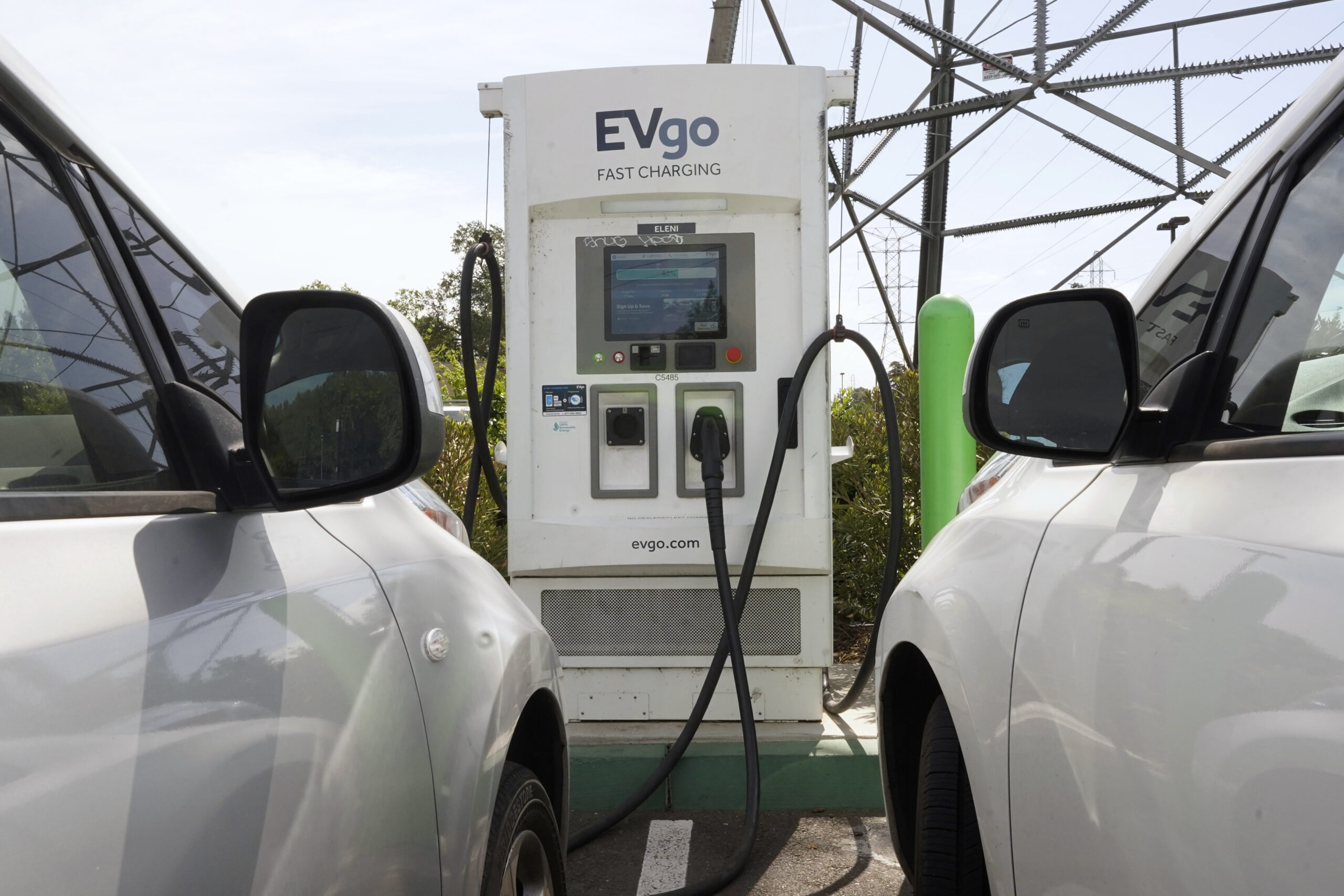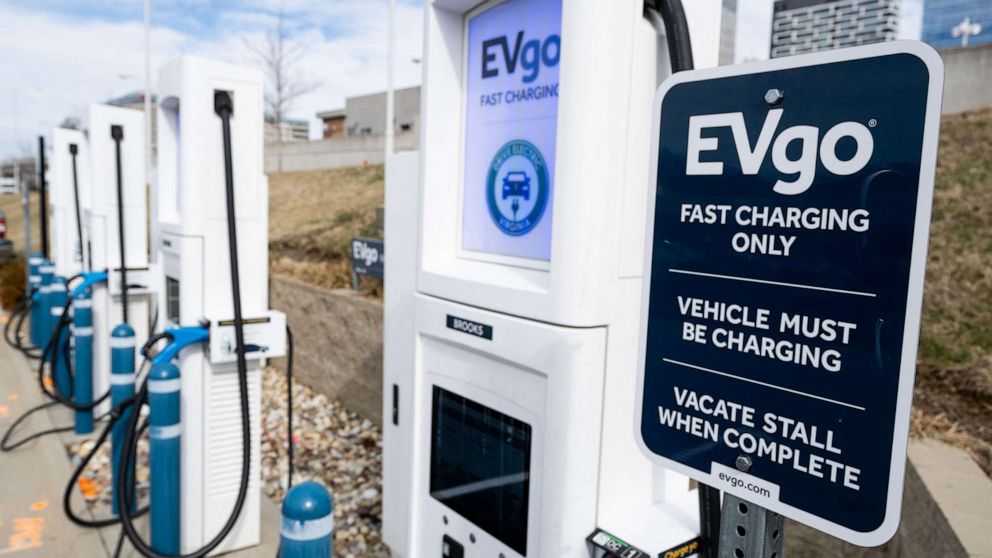Leading EV Charging News: Key Updates on Facilities and Advancement

Current Innovations in Fast-Charging Modern Technology

Additionally, improvements in battery modern technology, including improved thermal monitoring systems and higher energy thickness batteries, enhance fast-charging capabilities. These developments mitigate the risk of battery degradation throughout fast charging, guaranteeing durability and performance for EV owners.
In addition, the assimilation of clever charging options is enhancing user experience, making it possible for real-time tracking and vibrant prices models. EV Charging news. This flexibility allows chauffeurs to enhance charging times and prices based upon grid need
As automakers proceed to purchase fast-charging networks, the cooperation in between sector stakeholders is essential. Collaborations between billing terminal carriers and automobile makers are leading the way for comprehensive coverage, eventually cultivating an extra durable EV ecological community. These developments are crucial in supporting the change to lasting transport.
Government Campaigns for Charging Development
Federal government initiatives play a critical role in the development of electrical lorry (EV) charging infrastructure, promoting the transition to sustainable transportation. Numerous government and state programs are being implemented to boost charging accessibility, decrease the economic problem on customers, and advertise the adoption of electrical automobiles.
Notably, the united state government has actually allocated significant funding through the Framework Financial Investment and Jobs Act, which earmarks $7.5 billion for EV charging network advancement across the country. This financing is targeted at releasing hundreds of new charging terminals, especially in underserved locations, consequently attending to range stress and anxiety amongst potential EV buyers.
In addition, numerous states are establishing legislation to enhance the permitting process for charging terminal setups, which is crucial for accelerating deployment. Incentives such as tax obligation credit ratings and discounts for both customers and organizations are also being presented to urge the installation of charging framework.
Furthermore, public-private collaborations are progressively becoming an emphasis, leveraging private financial investment to complement federal government financing. These efforts emphasize a joint strategy important for developing a thorough and efficient EV billing network, ultimately adding to a greener and even more sustainable future.
Cutting-edge Battery Solutions Enhancing Performance
Reinventing the landscape of electric car (EV) innovation, innovative battery solutions are dramatically enhancing effectiveness and performance. Breakthroughs in battery chemistry, especially with lithium-sulfur and solid-state batteries, are bring about boosted power density, which enables longer varieties and faster charging times. These brand-new battery types have the prospective to outmatch conventional lithium-ion batteries by offering greater abilities while minimizing weight, therefore improving general automobile efficiency.
Additionally, developments in battery management systems (BMS) are optimizing energy use and expanding battery lifespan. Smart algorithms monitor battery health and performance, allowing real-time adjustments to billing and discharging procedures. This not just boosts the efficiency of the battery but likewise makes sure a more trustworthy and lasting power resource for EVs.
Moreover, the assimilation of reusing innovations is attending to the ecological influence of battery production and disposal. Developments in second-life applications for EV batteries are promoting their use in energy storage systems, adding to a circular economic situation.
As these cutting-edge battery options official website remain to develop, they guarantee to change the EV market, making electric cars a lot more easily accessible and appealing to a wider audience while supporting international sustainability objectives.

Collaboration Between Automakers and Billing Networks
Recognizing the important requirement for a robust charging framework, car check manufacturers are increasingly collaborating with billing network service providers to improve the EV possession experience (EV Charging news). These partnerships intend to create a seamless billing community that benefits consumers and sustains the transition to electric lorries
Significant automotive brand names are signing up with forces with established charging networks to expand their charging terminal insurance coverage, making certain drivers have accessibility to trustworthy and hassle-free billing alternatives. For example, partnerships with networks like ChargePoint and Electrify America enable car manufacturers to integrate billing remedies straight into their cars' navigation systems, assisting individuals to the nearest terminals and offering real-time accessibility updates.
Moreover, these cooperations frequently cause the growth of fast-charging innovations that dramatically decrease the time needed to recharge an EV. By merging resources and proficiency, automakers and billing networks can innovate faster, producing solutions that fulfill the growing demand for electric wheelchair.
On top of that, joint campaigns might additionally cause even more standardized charging methods, which can minimize customer complication and advertise broader EV adoption. Generally, these calculated partnerships are essential in developing a efficient and user-friendly charging framework that meets the demands of a broadening electric vehicle market.
Difficulties Facing EV Charging Framework
As the electric vehicle market remains to expand, numerous challenges are appearing that hinder the growth of an extensive charging facilities. Among the main challenges is the insufficient variety of charging terminals, particularly in underserved and country urban areas. This void develops range anxiousness among possible EV purchasers, preventing them from making the button.
In addition, the lack of standardization in charging innovation complicates the facilities landscape. Variants in plug kinds and charging rates can create confusion for users and raise operational intricacies for billing network drivers. Moreover, the combination of billing terminals right into existing electrical grids presents significant obstacles. Many regions deal with capacity limitations, requiring considerable financial investments in grid upgrades to fit boosted need.
Another pushing problem is the high cost connected with the installation and upkeep of billing stations, which can be an obstacle for both public entities and exclusive services. Ultimately, regulatory hurdles and zoning restrictions can postpone the release of charging facilities, restraining progression in increasing essential services. Dealing with these challenges will be essential for promoting a robust EV ecosystem that supports the shift to sustainable transportation.
Verdict
Finally, the recurring improvements in EV billing technology, sustained by substantial web government campaigns and innovative battery options, are critical for the development and performance of electric lorry framework. Collaborations between car manufacturers and billing companies better improve station coverage, attending to the growing need for available billing alternatives. Despite difficulties that continue within the EV charging landscape, these advancements signify a positive trajectory towards a much more reliable and sustainable electric vehicle community.
Developments in billing infrastructure have led to the growth of ultra-fast battery chargers qualified of supplying up to 350 kW of power, substantially reducing billing times. Variants in plug types and charging rates can develop confusion for users and boost functional intricacies for billing network drivers.In verdict, the ongoing improvements in EV charging technology, sustained by significant government campaigns and cutting-edge battery options, are essential for the development and effectiveness of electrical vehicle facilities. Partnerships in between automakers and charging carriers even more boost terminal insurance coverage, dealing with the expanding need for accessible billing choices. In spite of obstacles that continue within the EV billing landscape, these growths indicate a positive trajectory towards an extra lasting and reliable electrical lorry ecological community.